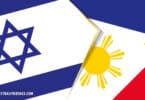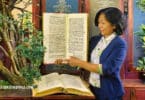The Philippines is no stranger to natural disasters, from typhoons to earthquakes, which have had devastating impacts on communities and their historical records. For genealogists, these events can present significant challenges in tracing family history, especially when vital documents are lost or destroyed. However, all is not lost. With the right approach, it’s possible to reconstruct family trees even after such events.
Understanding the Impact of Natural Disasters on Records
Natural disasters can cause widespread damage to physical records, such as birth, marriage, and death certificates, as well as church records and land titles. In many cases, entire archives may be compromised, making it difficult to access the information needed for genealogical research.
Disasters like Typhoon Yolanda in 2013, which struck the Visayas region, resulted in the loss of many local records. Similarly, the Baguio earthquake in 1990 caused significant damage to government buildings and archives in the area. These events underscore the importance of understanding the potential gaps in available records and being prepared to explore alternative sources of information.
Steps to Reconstructing Family Trees
When faced with lost or damaged records due to natural disasters, it’s important to approach the reconstruction of family trees methodically. Here are some steps to guide you through the process:
Start with What You Know:
Begin by gathering all your current information, including family stories, personal documents, and any surviving records. Create a list of known facts about your ancestors, such as names, dates, and locations. This foundation will help you identify the gaps that need to be filled.
Explore Alternative Sources:
When official records are lost, consider other sources that might hold similar information:
• Church Records: Local parishes may still have some records preserved, especially if they were stored separately from government archives. Baptismal, marriage, and burial records can be crucial in filling in gaps.
• Family Bibles and Personal Papers: These often contain handwritten records of births, marriages, and deaths within the family, passed down through generations.
• Community Histories: Local histories or commemorative publications can provide information on prominent families and community events, offering clues that might lead to further discoveries.
Reach Out to Relatives:
Relatives, especially older generations, may have personal records or recollections that can help reconstruct your family tree. Oral histories can be particularly valuable in providing context and connecting the dots between lost records.
Online Databases:
Many records are now digitized and available online, which can be a lifesaver when physical records are destroyed. Websites like FamilySearch.org, Ancestry.com, and MyHeritage.com offer access to a range of records that might include copies or transcriptions of the ones you’ve lost.
Check Regional and National Archives:
Sometimes, regional or national archives may have duplicate records or similar documents that were not affected by the disaster. For example, the National Archives of the Philippines (NAP) may hold microfilmed copies of records that were originally kept at the local level.
Consider DNA Testing:
In cases where traditional records are unavailable, DNA testing can provide an alternative way to connect with distant relatives and confirm family lines. Many online platforms allow you to compare your DNA with others, potentially identifying relatives you didn’t know existed.
Rebuilding Community Connections
In the aftermath of a natural disaster, communities often come together to rebuild, and this spirit of cooperation can extend to genealogical research. Engaging with local historical societies, community organizations, and even online forums can help you connect with others who are facing similar challenges. Sharing information and resources can be instrumental in piecing together lost histories.
Reconnecting with the Community:
• Join Local Historical Societies: These organizations often have members who specialize in preserving and reconstructing local history. They might have access to records or knowledge that isn’t widely known.
• Attend Genealogy Workshops or Conferences: Events focused on genealogy can provide opportunities to learn new research techniques and connect with others who might have access to relevant information.
• Participate in Online Genealogy Groups: Forums and social media groups dedicated to Filipino genealogy can be a great place to ask questions, share findings, and collaborate with others.Overcoming Common Challenges
While reconstructing family trees after a natural disaster is possible, it’s not without its challenges. Here are some common obstacles and how to overcome them:
Missing or Fragmented Records:
If records are partially damaged, you may need to consult multiple sources to piece together the full picture. Cross-referencing information from different documents can help fill in the blanks.
Language Barriers:
Older records, especially those from the Spanish period, may be in Spanish or written in old Filipino scripts. Seeking help from a translator or historian familiar with these languages can be essential in accurately interpreting the records.
Conflicting Information:
It’s not uncommon to find discrepancies between sources, especially when dealing with oral histories. When this happens, gather as much evidence as possible and look for corroborating details that can clarify the truth.
Preserving and Rebuilding Family History
Natural disasters can be devastating, but they don’t have to spell the end of your genealogical research. By systematically exploring alternative resources and engaging with the community, you can reconstruct your family tree and preserve your heritage for future generations.
While the process may be challenging, the reward of uncovering your family’s past is invaluable. Each discovery is a step toward rebuilding and preserving the stories of those who came before you, ensuring that your family’s legacy lives on even in the face of adversity.
Read More:
“Natural Disasters and Cultural Change” by John Grattan and Robin Torrence
Although not specific to the Philippines, this book examines the impact of natural disasters on societies and how such events can affect historical records, which might be relevant to your interests.
“The Chinese in Philippine Life, 1850-1898” by Edgar Wickberg
While this focuses on the Chinese community in the Philippines, it offers insights into historical contexts that may be useful for genealogical research.






